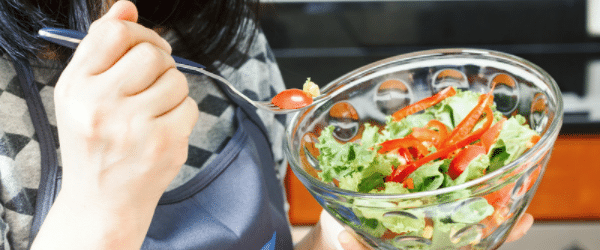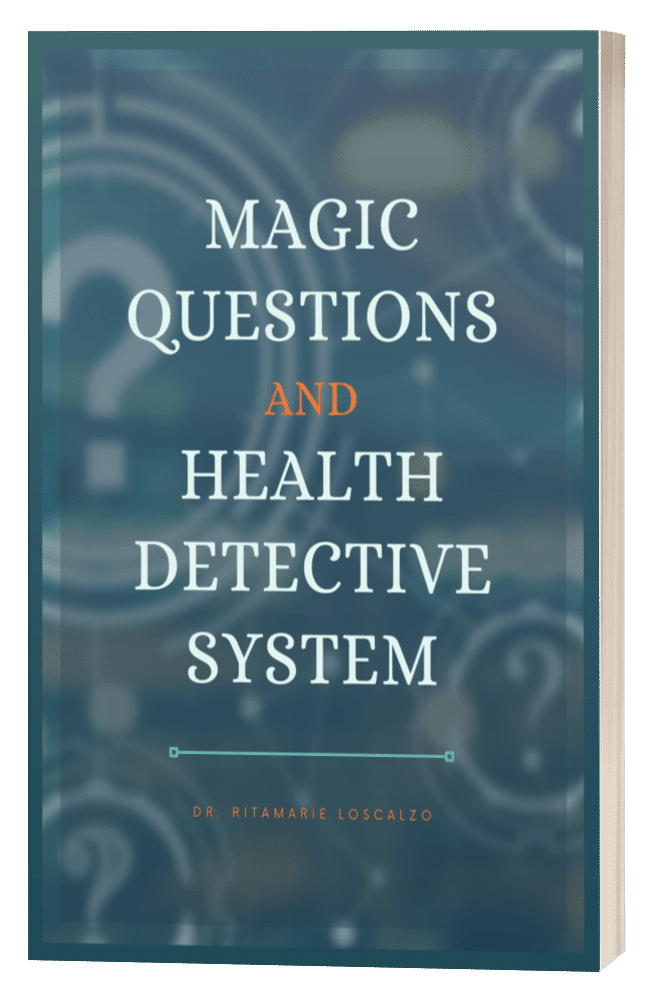HOME > reinvent healthcare podcast > The Real way to Get Results with a Provocation Protocol
The Real way to Get Results with a Provocation Protocol
By Ritamarie Loscalzo

Functional healthcare practitioners know how crucial it is to understand the chemical constituents in foods and how they impact each person differently.
It’s not uncommon to have been unknowingly eating food for years that has damaged the lining of your gut. As a result, food sensitivities can evolve slowly and are not always obvious. It’s critical to identify and eliminate these irritants long enough for the gut to heal if long-term health consequences are to be avoided.
In my previous two blogs I’ve shared Phase 1 and Phase 2 of my 4-phase Food Sensitivity Detection process. It’s successful because it leads to success for people who have struggled with stubborn symptoms for as long as they can remember.
Let’s talk about the last two phases of my elimination-provocation protocol.
Phase 3: The Reintroduction Phase
Before food can be reintroduced, all known food culprits need to be removed as identified in Phase 1, and a pre-planned elimination diet with only GREEN=GO foods has been strictly adhered to for 4-7 days as outlined in Phase 2. If leaky gut has been discovered, additional steps need to be taken to support gut healing before starting to re-introduce foods.
1) Begin adding back one food at a time.
It’s recommended to only add one food back at a time, especially if it’s a RED=NO food. The YELLOW=MAYBE foods may be added back up to three at a time, but if there is a reaction, there is no way of knowing the cause and all must be removed to start over.
2) Document and observe.
Continue using a food journal from Phase 1 to record food intake and any symptoms. If a RED=NO food is reintroduced with no reaction, continue eating it for four days at least twice a day. If there is still no reaction, it can be considered safe and added to the green columns.
If a food sensitivity is in question, one of the common mistakes made is not eating enough of the reintroduced food. Be sure a large enough quantity is eaten so a reaction can be clearly identified.
Remember, reactions can take place a few minutes, hours, or days after eating the offending food. It can show itself as sleepiness, brain fog, or even depression. Proper documentation throughout this process is crucial.
3) How to handle reactions.
If a food causes a reaction, remove the food for at least five days and try again. Test up to three times. If it causes a reaction each time, it needs to be removed from the diet.
Phase 4: The Maintenance Phase
Stick to the Maintenance Phase for at least six months and continue using a food journal to document. The longer safe habits learned in the previous 3 phases are practiced, the greater the long-term health benefits.
- Continue with foods determined to be safe and avoid all those found harmful.
- Avoid gluten and top allergens as long as possible, even without symptoms.
- Select foods that support gut health and avoid those that don’t.
- Be sure meals are an enjoyable, low-stress experience.
Final Thoughts
It’s good to remember the point of an elimination and provocation protocol is not to permanently remove culprit foods, but to facilitate healing at the root level. In doing this, food sensitivities are reduced or eliminated and a varied diet rich with whole, unprocessed foods can once again be enjoyed.
It can be a long process, but by breaking it down into manageable steps, you and your clients, if you’re a practitioner, can be supported as you work your way through it. Lasting benefits are often discovered that have eluded some for a lifetime.
My Nutritional Endocrinology Practitioner Training (NEPT) provides practitioners with the knowledge and tools needed to take them to the next level and supports the advancement of holistic and functional health which is so desperately needed.
Membership in the Body Freedom Nutrition Lab or Empowered Self-Care Lab provides access to the 4-phase elimination/provocation protocol I have developed that is so effective at identifying food sensitivities.
Listen to my podcast, ReInvent Healthcare, where I deepen the conversation about how practitioners who want to make a real difference can empower clients to achieve their best health.
Comment below and share your thoughts.
Share this:

Are you feeling stuck?
Do you feel as if something is missing from your practice that's keeping you from delivering breakthrough outcomes for your clients?.
Recent Posts
Our Programs
Nutritional Endocrinology Practitioner Training (NEPT)
The Mastery and Certification tier is our flagship program and provides everything you need to feel confident as a practitioner who knows how to get results that lead to healthy and happy clients.
Functional Assessment Mastery
Explore the relationships between the most important hormones and their relationship with nutrition.
Functional Nutrition Mastery
Learn how to support your clients to eat and supplement in a way that reduces and eliminates chronic symptoms.
Medical Disclaimer: The information on this website is not intended to replace a one-on-one relationship with a qualified health care professional and is not intended as medical advice. It is intended as a sharing of knowledge and information from the research and experience of Dr. Ritamarie Loscalzo, drritamarie.com, and the experts who have contributed. We encourage you to make your own health care decisions based upon your research and in partnership with a qualified health care professional.
Disclosure: Sometimes (but not always), when I share resources in my programs, newsletter, and on my website, I'm using an affiliate link, which means I do make money if you buy. My credibility is extremely important to me; therefore, I only endorse the products, services, and people I believe in. DrRitamarie.com is independently owned and the opinions expressed here are my own.
Click here to see our Privacy Policy.







